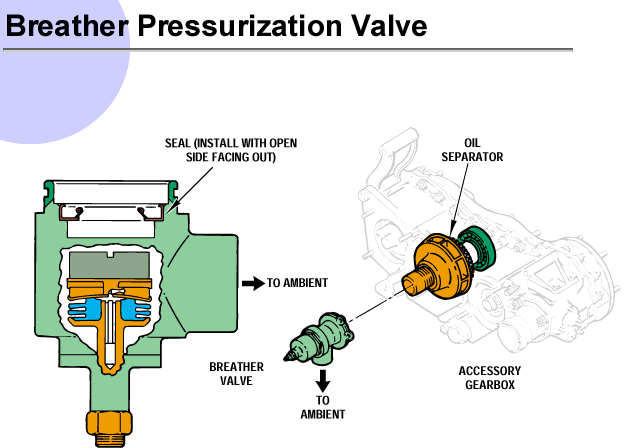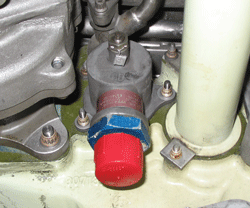

While many factors will cause a low or high oil pressure indication on Honeywell TFE731 engines, one of the more common causes is a faulty BPV (Breather Pressurizing Valve). The following are two scenarios that will lead you to this conclusion.
Oil Pressure Rises During Descent
If the crew reports normal oil pressure at altitude, but the oil pressure rises as the aircraft descends, the most probable cause is that the BPV is stuck in the closed position. At sea level, the valve should be open at approximately .070 in. Using a strong light, look up into the BPV vent tube port to see the valve. If it is closed, replace the BPV. A defective bellows will cause the valve to be closed when the aircraft is on the ground.
Oil Pressure Drops During Climb
If the engine has normal oil pressure below 27,000 ft during operation but drops as the aircraft climbs higher, it is another indication that the BPV is not closing. Remove the BPV and push on the bellows. It should be firm and not move. If you can move the bellows, replace the BPV. If the bellows feel normal, swap with the opposite engine to verify that the BPV is serviceable.
If the squawk discrepancies are still present, contact me with more questions.
December 2025
May 2025
March 2025
March 2025
January 2025